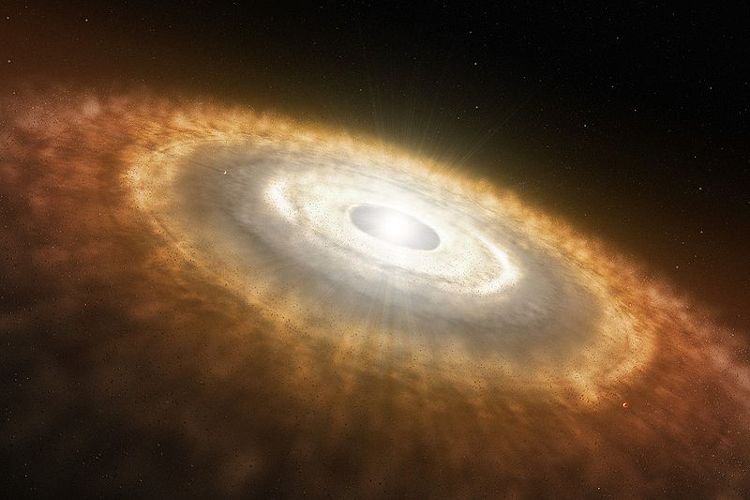
Dec. 26, 2018
Research Highlight
The Efficiency of Noble Gas Trapping in Astrophysical Environments

Artist's illustration of a protoplanetary disk. The chemistry and physical processes of a protoplanetary disk determines what molecules are incorporated into a newly forming planet.Image credit: ESO/L. Calçada.
Researchers have applied experimental results on the trapping of extreme volatiles in amorphous ice to a new numerical model in order to better understand how this process might occur in molecular clouds and protoplanetary disks. Doing so allowed the team to examine trapping under conditions that are expected to be present in clouds and disks, particularly in regard to ice deposition rates and temperature. Data from the model was used to identify two types of ice trapping that can occur; and could ultimately help determine the sources of trapped volatiles that are involved in planet formation.
The study, “The Efficiency of Noble Gas Trapping in Astrophysical Environments,” was published in The Astrophysical Journal. The work was supported by the Nexus for Exoplanet System Science (NExSS). NExSS is a NASA research coordination network supported in part by the NASA Astrobiology Program. This program element is shared between NASA’s Planetary Science Division (PSD) and the Astrophysics Division.